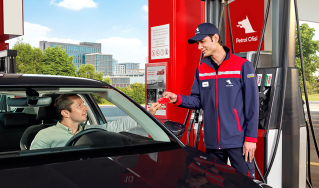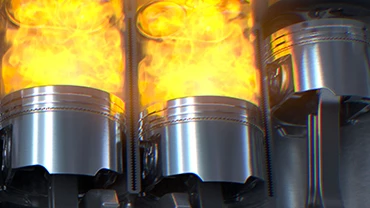What Is an Electric Vehicle?
Electric vehicles are innovative means of transportation powered by electric motors instead of traditional gasoline or diesel engines. Instead of conventional internal combustion engines, they use electric motors powered by electricity stored in batteries. Compared to gasoline and diesel vehicles, electric vehicles produce up to 70% fewer emissions, offering an environmentally friendly transportation option.
What Are the Advantages of Electric Vehicles?
Electric vehicles produce no exhaust emissions and do not contribute to air pollution. Therefore, they stand out as an eco-friendly technological solution to global challenges such as global warming and air pollution. They also stand out for their lower running costs. Because electricity costs less than gasoline or diesel, electric vehicles are more economical to operate. Additionally, with fewer moving parts, maintenance expenses remain significantly lower.
Electric vehicles operate almost silently compared to traditional cars. This helps reduce noise pollution and creates calmer, quieter cities. Tax incentives are another major advantage. In many countries, electric vehicle owners benefit from tax reductions or exemptions. This makes switching to an electric vehicle even more appealing.
In terms of performance, electric motors deliver torque much faster than conventional engines. This results in quicker acceleration and a smoother, more responsive driving experience.
What Are the Disadvantages of Electric Vehicles?
Initial Cost: Electric vehicles currently have higher purchase prices compared to gasoline or diesel models. This can make ownership less accessible for some buyers.
Limited Range: Electric vehicles generally have a shorter driving range than their gasoline or diesel counterparts. This may require drivers to plan for charging stops on longer trips.
Charging Time: Longer charging times remain one of the key drawbacks of electric vehicles. Charging a battery fully takes longer than refueling a traditional vehicle. This can sometimes lead to time constraints for drivers on the go.
Charging Infrastructure: Charging stations are not yet as widespread as fuel stations. This can still pose challenges for some users, depending on location. However, as charging networks expand and charging times shorten, these challenges are expected to diminish rapidly.
What Are the Different Types of Electric Vehicles?
Hybrid Vehicles: These vehicles feature both an electric motor and a gasoline or diesel engine. The conventional engine activates when additional power is required.
Plug-in Hybrid Vehicles: These vehicles also have both an electric motor and a conventional engine, but they can travel a certain distance powered solely by electricity. The gasoline or diesel engine engages once the electric range is depleted.
Fully Electric Vehicles: These run exclusively on electricity and have no conventional engine at all.
Types of Electric Vehicle Charging Stations
Level 1 Charging: Slow charging through a standard household outlet. This method takes longer to achieve a full charge. Level 2 Charging: Faster charging via dedicated home or public charging stations. Provides a full charge in significantly less time than Level 1. Level 3 Charging: Also known as fast charging, this is the quickest option available. It can fully charge a vehicle in under 30 minutes — much faster than Level 2. However, Level 3 stations are not yet as common as other types.
What to Consider When Buying an Electric Vehicle
If you are planning to buy an electric vehicle, it is important to keep the following in mind:
Determine the driving range you need and how many kilometers you typically travel in a day. This will help you choose a model with a range that fits your lifestyle. Since electric vehicles come in a wide price range, setting a clear budget will make your search easier.
Compare different makes and models. Read user reviews and, whenever possible, schedule test drives. This way, you can identify the model that best matches your expectations. Check the availability of charging stations in your area or along your regular routes. This will make day-to-day use far more convenient. Also confirm whether maintenance and repair services for electric vehicles are accessible where you live.
The Future of Electric Vehicles
The share of electric vehicles in the global market is expected to grow rapidly in the coming years — and for good reason.
New battery technologies are evolving quickly, driving this transformation forward. Advances in battery design are extending driving range and shortening charging times. These improvements are making electric vehicles more appealing and paving the way for broader adoption. With continued investment, the number of charging stations is also steadily growing. This expansion makes electric mobility more practical and helps ease drivers’ concerns about range. Increasing environmental awareness is another major factor accelerating this shift. Policies aimed at reducing fossil fuel consumption and curbing pollution are further encouraging electric vehicle ownership.
It is important to remember that electric vehicles are a continuously evolving technology. In the near future, we are likely to see models that offer longer range, faster charging, and more accessible pricing.
Petrol Ofisi Solutions for Electric Vehicles
Petrol Ofisi is shaping the future of mobility with innovative solutions designed for electric vehicles. Under the e-POwer brand, Petrol Ofisi offers an extensive network of electric vehicle charging stations across multiple locations. With both AC and DC charging options available, drivers can find the right solution for every need and journey.
Petrol Ofisi also introduces its specially developed EV Series, created to meet the specific cooling and lubrication requirements of electric vehicles. Products such as Maxima EV Fluid, Ultra Grease EV, and MaxiGear EV Transmission Fluid are formulated to ensure your vehicle runs at peak performance while extending its lifespan.
Petrol Ofisi remains committed to developing forward-thinking products and services that cater to every aspect of electric vehicle ownership. Choose Petrol Ofisi’s electric vehicle solutions and drive the change toward a cleaner, more sustainable future.
Frequently Asked Questions About Electric Vehicles
Electric vehicles are cars powered by electric motors that draw energy from rechargeable batteries instead of gasoline or diesel engines.
Charging time varies depending on the charging method and the battery’s capacity. With Level 3 fast charging, some models can be fully charged in less than half an hour.
You can charge your electric vehicle at home outlets, private charging stations, public charging points, or even at shopping malls.
Since electric vehicles have far fewer moving parts than conventional cars, their maintenance costs are significantly lower. Generally, routine check-ups and simple procedures such as tire replacement are sufficient.





